Green architecture – King Abdullah University of Science and Technology
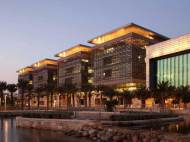 Here’s a project that earned its spot in our green architecture series, despite the fact it is a complex of 27 buildings. Although this project is from few years ago and there are a few counter-sustainable facts about the complex, we had to write about it to demonstrate how a complex could be built with sustainability in mind. King Abdullah University of Science and Technology (KAUST) in Thuwal is the first LEED Platinum certified project in Saudi Arabia.
Here’s a project that earned its spot in our green architecture series, despite the fact it is a complex of 27 buildings. Although this project is from few years ago and there are a few counter-sustainable facts about the complex, we had to write about it to demonstrate how a complex could be built with sustainability in mind. King Abdullah University of Science and Technology (KAUST) in Thuwal is the first LEED Platinum certified project in Saudi Arabia.
Designed by HOK, the 511,000 square meters (5.5 million square feet) of complex space across 27 buildings offer 186,000 square meters (2 million square feet) of laboratory space spread across four interconnected buildings. Modular building shells and universal floor plates accommodate virtually every lab type where researchers pursue sustainable solutions for water, energy and food.
Aside its size, the question of the sustainability of the complex construction and the fact it is remote from the major cities of the country. KAUST is located on the coast of the Red Sea on a place 30 miles north from Jeddah – a major urban center of western Saudi Arabia. Aside being remote, the campus had to be constructed to be resistant to intense sun and ubiquitous sand of the desert, as well as high humidity and unusually high salinity of the marine site.
The site itself needed improving from a geotechnical point of view before the campus was constructed. 42,000 stone columns were drilled into the ground to stabilize the soil and bring it to a condition that could support the weight of the buildings, and lift the soil by 8 feet of soil in order to ensure that future rising sea levels and changing climate patterns do not endanger the building designed to last at least 100 years.
Integral solar shading over most of the facades reduces heat loads and creates dappled light in building interiors. The roof features nearly 12,000 square meters (900,000 square feet) of solar thermal and photovoltaic arrays produce up to 3,300 megawatt hours of clean energy annually. While it sounds impressive, keep in mind that these two systems provide only 7.8 percent of the total energy required to operate the campus. Combined with other energy saving features, the campus manages to cut he energy costs by 27 percent.
More sustainable substitutes for cement like fly ash and silica fume were not locally available, so the team opted for the cast-in-place concrete as the buildings’ primary structure, and an interesting solution which lowered the transport of the material to the site was devised by creating three concrete-batch plants and one pre-cast plant on site.
More than 75 percent of all construction waste was recycled for the KAUST campus, and local concrete and steel used in the construction have high levels of recycled content. All steel rebar was treated with a special epoxy coating in order increase its durability, and aluminum was used instead steel where possible.
Efficient water fixtures and waterless urinals lower the annual potable water consumption by approximately 42 percent. Rainwater as well as the water from a wastewater treatment plant (WWTP) located to the south of the KAUST, is used for irrigation on the campus. While the landscaping that does not require supplemental irrigation, I have to point out that the campus also has a green golf coarse which uses this water.
All outdoor air intakes and interior spaces are monitored with CO2 sensors to ensure that appropriate levels of ventilation and fresh air are being supplied to building users. All campus buildings ca activate ventilation rates that are 30% percent higher than standard in order to ensure continued supply of indoors fresh air. The labs also utilize a heat-recovery ventilation system to provide fresh air while saving energy.
Air quality is ensured with usage of interior finishes and furniture with no or low levels of volatile organic compounds (VOC) and high levels of recycled content (gypsum board, carpets, ceiling tiles, paints, adhesives, and millwork). The wood used in the campus buildings consists out of composite wood and agrifiber products that do not contain urea-formaldehyde.
Another passive solution which helps in temperature regulation as well as abundance of fresh air are the 195-foot-tall solar towers. The glazed towers ventilate the courtyard spaces between the lab clusters and ensure the ventilation of chemicals and biological materials which are tested in the labs.
The campus paving design incorporates light-colored stone indigenous to similar harsh climates – reflecting rather than absorbing heat. The reflective nature of the stone and the shaded trellises reduce the heat-island effect on campus and improves occupants’ comfort levels throughout the year.

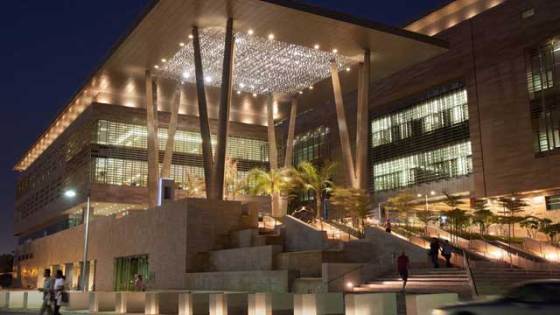
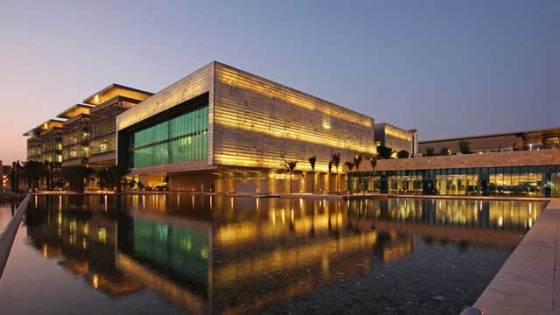
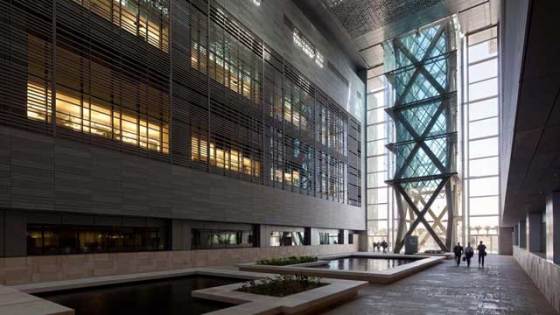
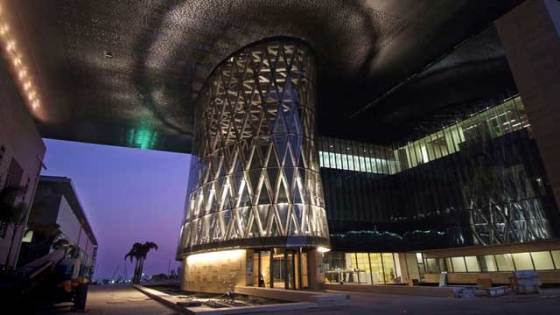
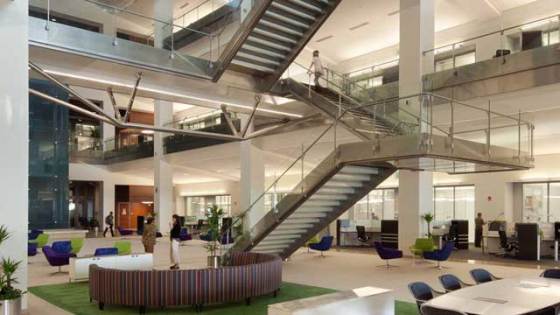








I like the solutions from the architect, but I don’t like the location and golf coarse!
@Hanako-sama And another problem which wasn’t mentioned here is the lack of students in that university. I hope that the region and Thuwal will develop.
Though claimed as Green, it essentially uses a lot of energy. In any Energy Enterprise it is INPUT Vs OUTPUT!
Dr.A.Jagadeesh Nellore(AP),India
E-mail: anumakonda.jagadeesh@gmail.com